Why do cats scratch?
Scratching is normal behavior for cats. It helps them mark their territory and scent glands in their paws leave olfactory clues for other cats to alert them to their presence.
Cats also find it pleasurable as a means of exercise and stretching. The exercise allows cats to keep their claws healthy and shortened. Unlike dogs, cat claws do not exfoliate evenly from the end; they peel off in layers like an onion.
What is inappropriate scratching?
Inappropriate scratching is ultimately determined by the household the cat lives in, but is generally directed at: furniture, screens, carpets and rugs and other items that the cat “isn’t supposed to” scratch on.
What can I do to prevent this?
Cats are highly intelligent animals that can easily be trained with some time and effort. They respond to voice commands, so you can use those to praise your cat, along with high-value treats (or catnip!) when they scratch in the right place.
Cats need enrichment so they don’t become bored and restless (and mischievous!) if they don’t have enough to satisfy their curiosity. Daily exercise and enrichment like providing them a place to climb, perch, scratch, and play will do wonders for their mental and physical well-being.

Continue reading below! We have ideas for a variety of challenges. It all comes down to:
Enrichment × Grooming × Wellness
Common Challenges
My cat is ignoring the scratching post. How do I get them to use it?
Place the item in the areas that your cat(s) enjoys scratching. You can entice the cat to use the item by rubbing or sprinkling catnip.
If your cat insists on using the wrong scratching surface, guide your cat to the correct site when you catch them scratching on an undesirable item. Once at the post, you can start petting and scratching your cat while placing their feet on the surface for encouragement and stimulation of the natural kneading motion.
Remember to reward your cat for its good behavior!
My cat still enjoys their favorite areas! What else can I try?
Ideally you would prevent access to that area by covering the area or closing the door to the area. If you catch your cat in the act, calmly, and with no fanfare, bring the cat to the preferred post and reward lavishly there.
Products like Feliway® can sometimes help. Feliway is a feline facial pheromone that works on the premise that it will decrease your cats’ need to mark, but instead mark with its cheek (called “bunting”). It’s been used for urine marking specifically, but can be tried for claw marking as well. For more information, talk with your veterinarian.
What not to do: Direct punishment, such as you telling them “no”, will result in your cat not scratching when you are present, but it will not stop them from scratching when you are gone.
If your cat is scratching the couch corner:
There are a variety of “furniture protector” products that can help you protect your couch. These small sheets of plastic lay across your couch corners. Check out CLAWGUARD for ideas and options (though there are many out there!).
There are also scratching posts specifically made to wrap around couch corners (like this cat scratcher couch corner on Etsy).
If your cat is scratching the wall-to-wall carpet:
Your cat might prefer scratching carpet more than sisal, wood, or cardboard.
The good news? There are scratching posts made of carpet! Make sure to make the carpeted post more attractive than the carpet on the floor by keeping it sprinkled with catnip.
Carpet samples are also inexpensive options and can be placed over the area of wall-to-wall carpeting your cat is scratching to prevent permanent damage while you are training your cat to just scratch the carpeted post.
If your cat likes to scratch cardboard too, it’s always a good idea to have a cardboard scratcher near the area of carpet your cat is scratching and praise them when they scratch the cardboard and not the carpet. Yummy treats work too!
If your cat is scratching the wall or woodwork:
Try putting a piece of plexiglass against the wall so your cat has nowhere to sink their claws in and learns to avoid that area.
Place a tall vertical scratching post nearby so there is something appropriate to scratch You can also place a sheet of cardboard, old bulletin board, sisal scratching board, or wood (painted the same color of the walls if you really want to get fancy!) against the wall that kitty likes to scratch so no permanent damage is done to the wall.
There are also scratching posts made of natural wood if your cat loves the feel of scratching natural wood.
If you’re worried about your cat scratching new furniture:
While a cat is learning not to scratch your new piece of furniture, cover it while you aren’t home while providing a sturdy post or cardboard pad nearby so they know where to scratch – remember to praise them when you see them scratching the right place!
Don’t forget about extra nail trimmings or Soft Paws when new furniture arrives — if the nails are trimmed or covered with Soft Paws, then no damage can happen! Soft Paws can also be worn all the time. You can also spray some Feliway to reduce territorial scratching around the new furniture.
Enrichment Ideas

Scratching Posts
Found at any pet supply store, scratching posts come in a variety of styles, sizes, and materials.
Pictured: Pimms modeling a cat tree with two scratching posts.
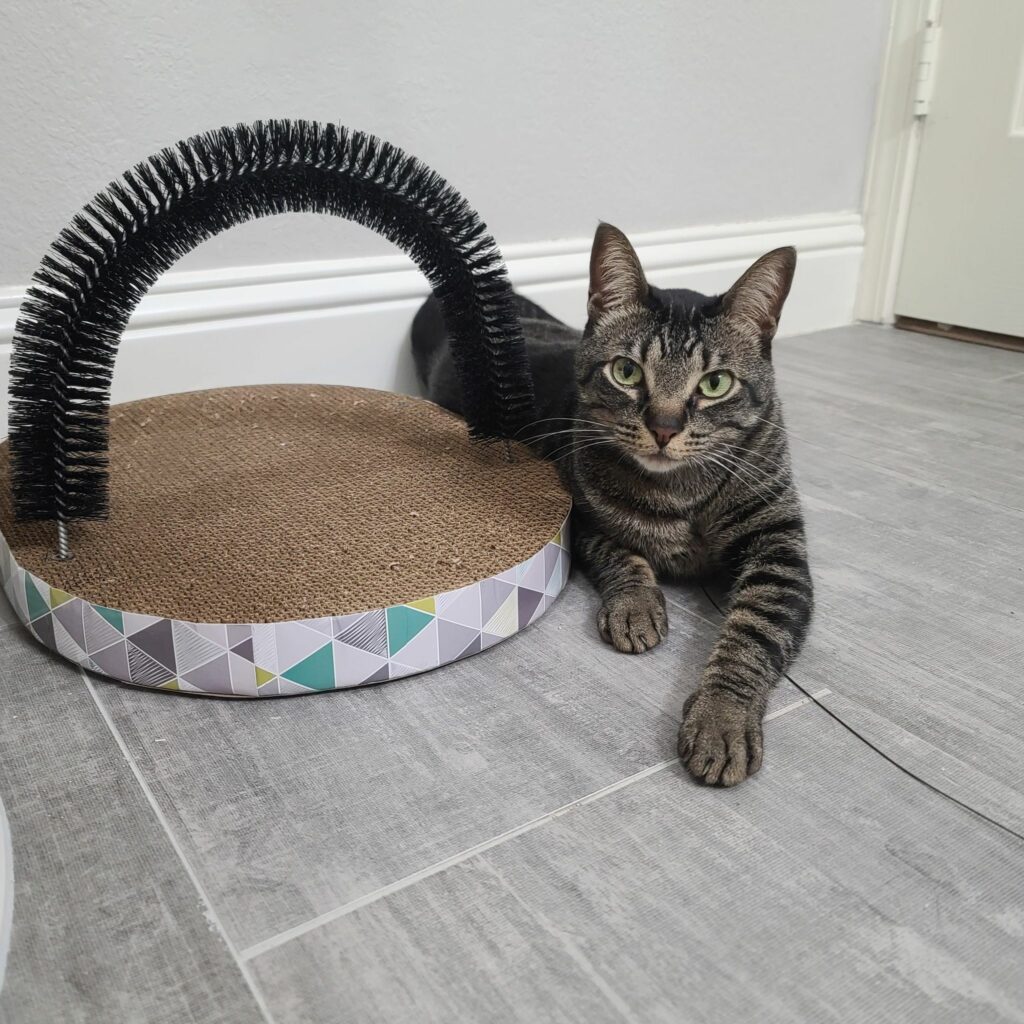
Scratch Pads
Like scratching posts, scratching pads can be found at any pet supply store and come in a variety of styles, sizes, and materials.
Here’s a link to the cardboard scratch pads we use at the shelter – they’re small enough to fit in their kennels and the cats love it when we sprinkle them with catnip, which gets caught in the grooves!
Pictured: Pimms with his favorite scratch pad.
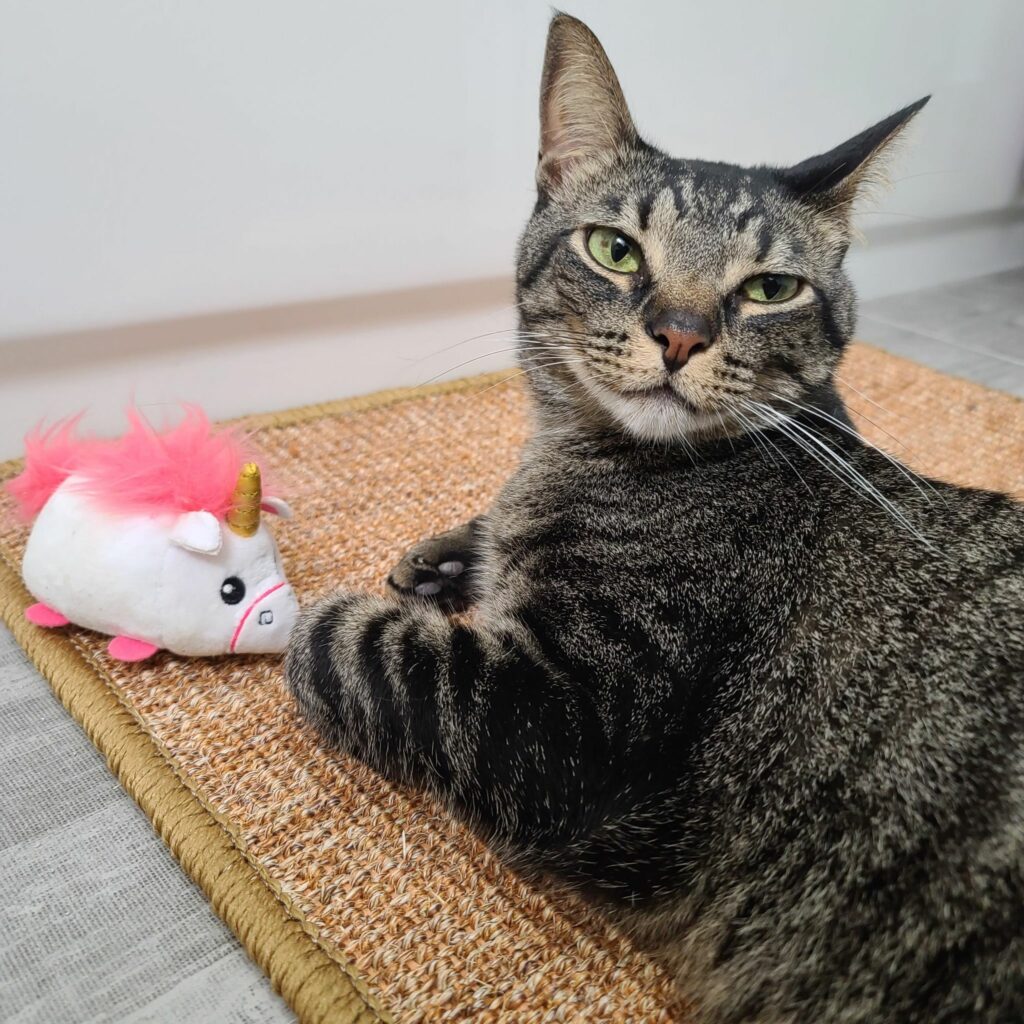
Scratch Mats
Like scratching posts, scratching mats can be found at any pet supply store and come in a variety of styles, sizes, and materials.
Pictured: Pimms likes to nap with his unicorn friend on his scratching mat.

Think wild!
We all know that our cats are really just tiny panthers, so think about what the big cats scratch in nature and bring it in for your little cat to scratch — logs, rocks, and tree branches.
Pictured: Pimms’ cousin, Dennis the panther, hanging out in a tree.
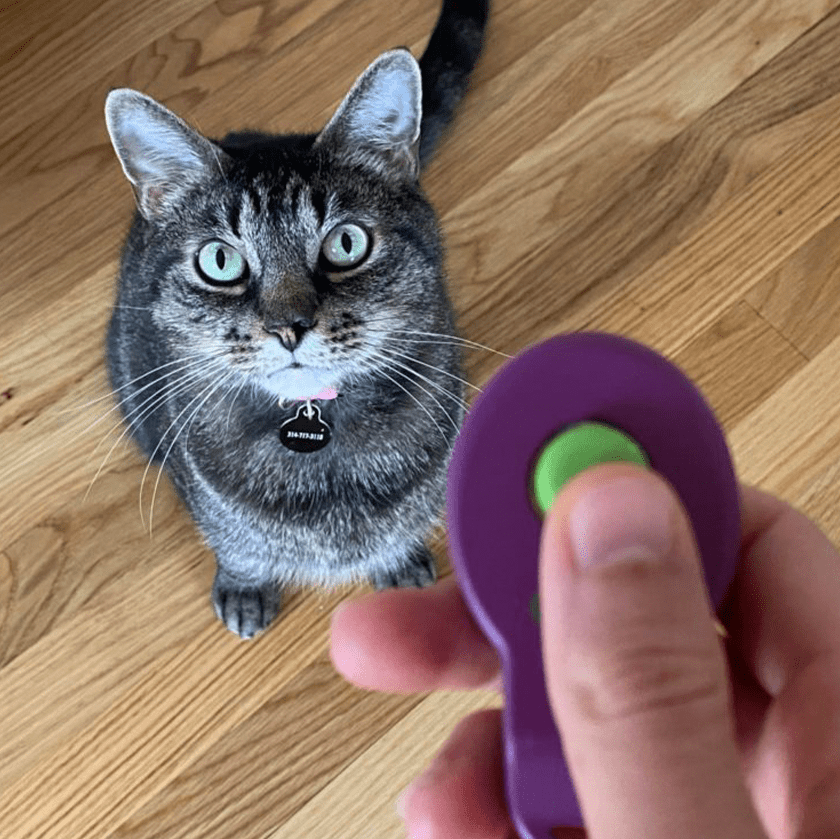
Clicker Training
Click training with cats is very popular. Cats can even be trained to use the toilet and play the piano using a clicker! Training with the clicker involves directing your cat to a desired activity instead of the undesirable area that they’re scratching.
Grooming Options
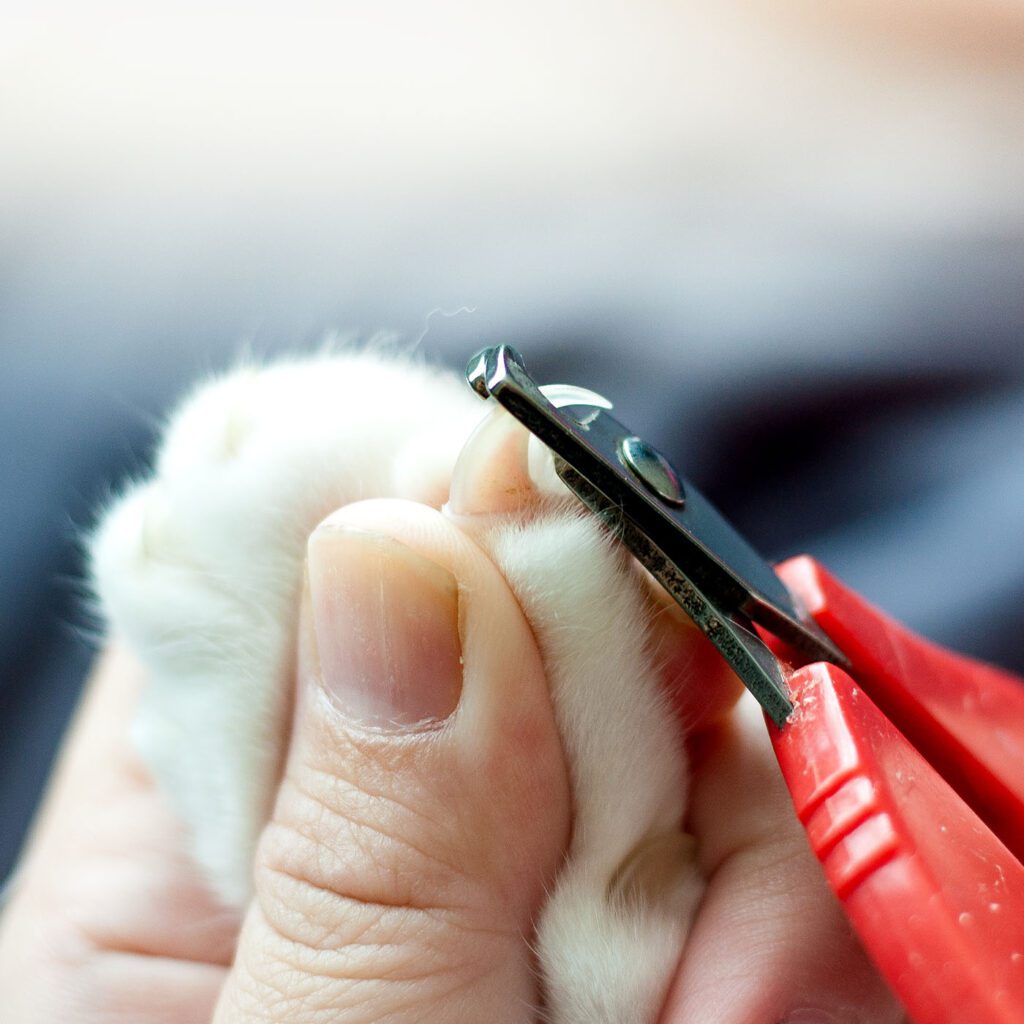
Nail Trimming
The easiest way to prevent severe damage is to trim your cats nails every 2-4 weeks. It is best to begin this process when the cat is very young, as they will become more accustomed to this procedure. However, older cats can learn to tolerate it as well.
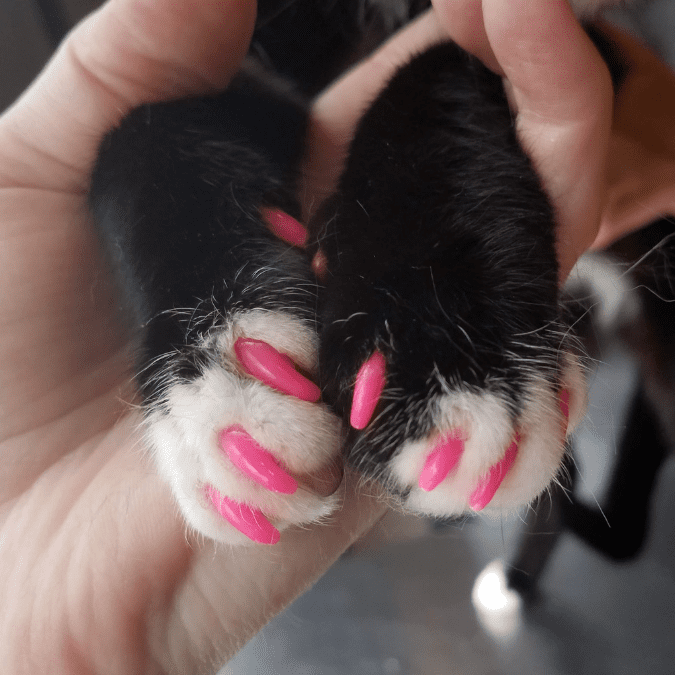
Soft Paws
Soft Paws are soft vinyl nail caps that can be glued over claws. They last several months at a time and are excellent training tools, especially when you are bringing a new cat into the house.
Cover their claws with Soft Paws while you see where and what kind of texture your new cat likes to scratch. They are also good when a new piece of furniture arrives and your cat needs training time to learn not to scratch it — if the nails are trimmed or covered with Soft Paws, then no damage can happen! Soft Paws can also be worn all the time.
Oh, and they look fancy, too!
Content sourced and adapted from:
- A. Brelsford, J. Deter, J. Groom – Clinical Animal Behavior Service Link has been removed from their website.
